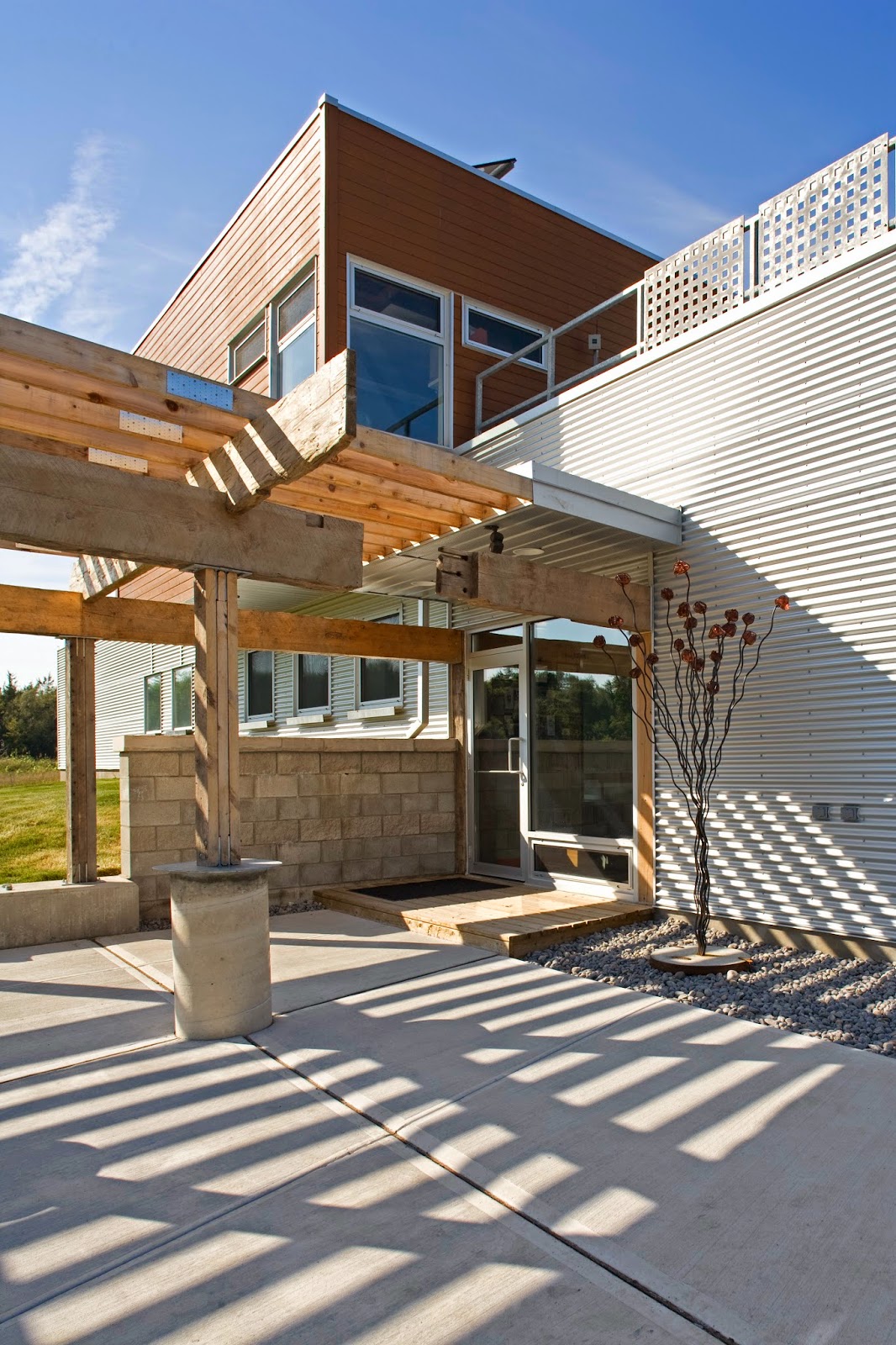(Fifth Town Artisan Cheese Company, Picton, ON - LEED Platinum building)
The construction industry is a vital part of the growth and success of a country. It is responsible for building the physical infrastructure that provides transportation and facilities for citizens, businesses, industries and institutions. Construction has a major influence on the economic wealth, societal well¬being and sustainability of the built environment. The Canadian construction industry employs more than 1.2 million people. In 2010 it accounted for 6% of Canada’s gross domestic product (GDP), with a total value of 73.8 billion dollars. From 2000 to 2010, the GDP from construction increased 42.7% whereas GDP for all industries increased 20.2%.(1)
Construction also has a profound impact on our natural environment. In North America, the built environment accounts for approximately one third of all the greenhouse gas (GHG) emissions, as well as energy, water and materials consumption. Given the increased awareness of “green” construction, there is growing interest in using steel because of the major recycled content and recyclability attributes it provides to architects, engineers and specifiers in the construction industry.
The steel industry, through the Canadian Sheet Steel Building Institute is committed to providing steel solutions that promote the use of sustainable materials in construction applications. This fact sheet provides an overview of the two main methods used to produce steel, and describes the recycled content of the steels used to manufacture building products such as roofing, cladding, decking, structural and non-structural framing and the many other construction products used in the industry.
Once iron ore is extracted and refined into steel, its life never ends. This makes steel an ideal material to deploy in sustainable strategies for the construction industry. Today’s steel is produced using two technologies both of which require “old” (recycled scrap) steel to make “new” steel. The combination of these technologies enables Canadian steel mills the flexibility to produce a variety of steel grades for a wide range of product applications.
Steel – The World’s Most Recycled Material
Steel is the world’s most recycled material. In 2012 alone, 88 million tonnes of steel were recycled in North America.(2) This is done for economic reasons, as scrap is a valuable commodity and the fact that recycling has significant environmental benefits. Even though two out of every three kilograms of new steel are produced from “old” steel, the fact that buildings, appliances, bridges and other infrastructure products have such long service lives, makes it necessary to continue to mine some virgin ore to supplement the production of new steel.
Once iron ore is extracted and refined into steel, its life never ends. This makes steel an ideal material to deploy in sustainable strategies for the construction industry. Today’s steel is produced using two technologies both of which require “old” (recycled scrap) steel to make “new” steel. The combination of these technologies enables Canadian steel mills the flexibility to produce a variety of steel grades for a wide range of product applications.
Steel – The World’s Most Recycled Material
Steel is the world’s most recycled material. In 2012 alone, 88 million tonnes of steel were recycled in North America.(2) This is done for economic reasons, as scrap is a valuable commodity and the fact that recycling has significant environmental benefits. Even though two out of every three kilograms of new steel are produced from “old” steel, the fact that buildings, appliances, bridges and other infrastructure products have such long service lives, makes it necessary to continue to mine some virgin ore to supplement the production of new steel.
(accessed January 22, 2014)
(2) Steel Recycling Institute - http://www.recycle-steel.org (accessed January 22, 2014)
Click here to download Fact Sheet 20: Recycled Content of Steel Building Products to learn more.




Glad you shared this! Steel buildings are becoming a trend not just in Canada but in the US as well. This is why contractors like myself love working with steel. Aside from it's very cost effective, it's very flexible yet durable. No other material could be as easy to customize than steel yet is very sturdy and dependable. Hope you're open to us sharing your content on our Facebook page and Linkedin. ~ All the Best, Stu
ReplyDelete